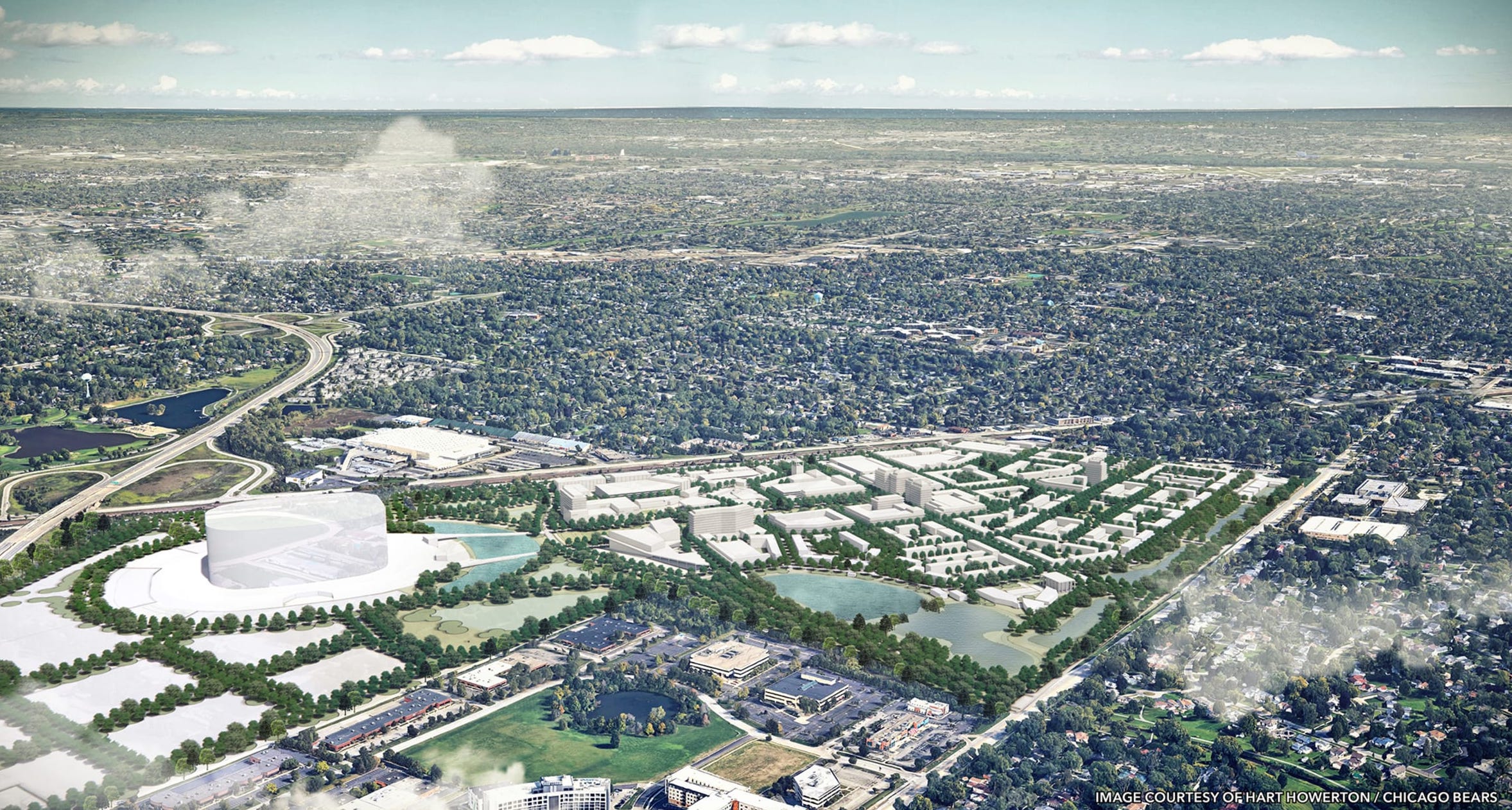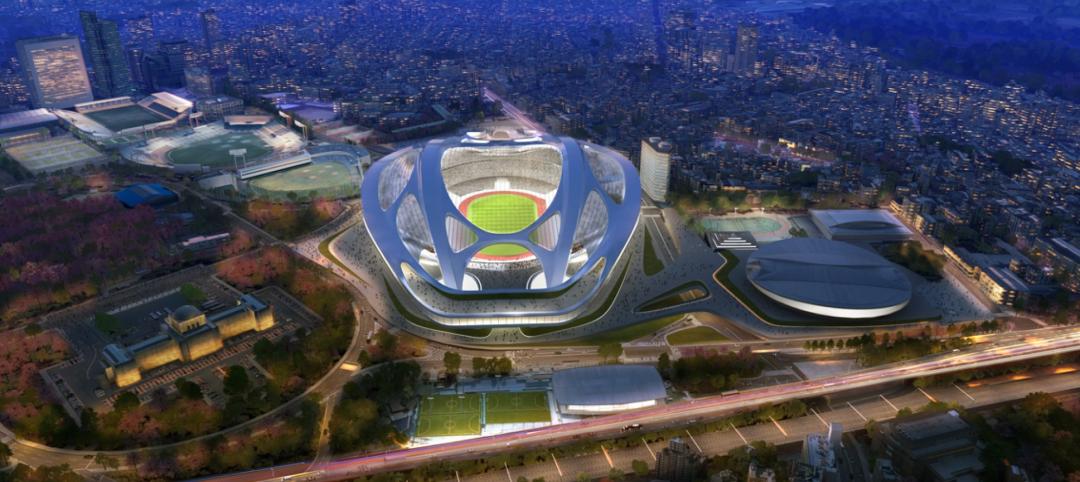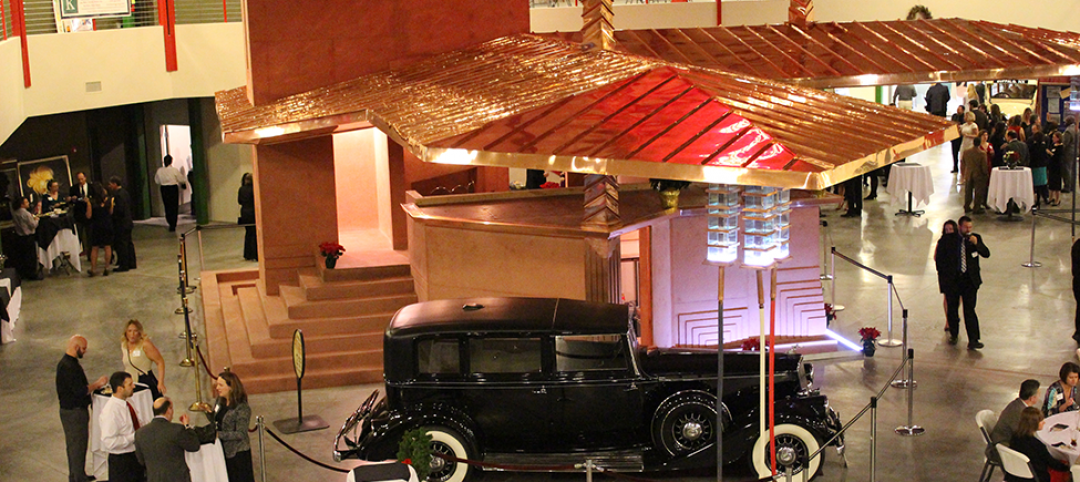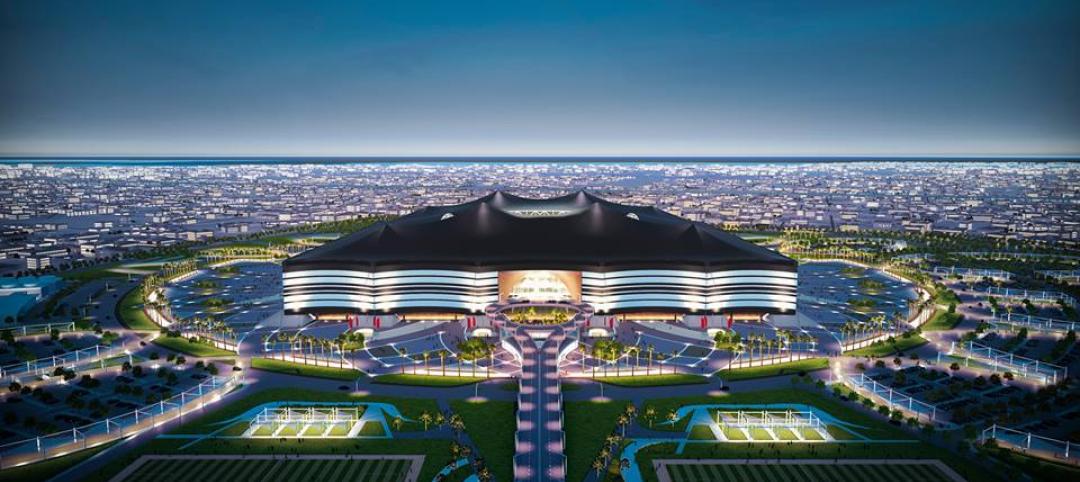As the 2022 NFL season kicks off, one of the league’s original franchises is solidifying plans to leave its landmark lakefront stadium for a multi-billion-dollar mixed-use stadium district in northwest suburban Arlington Heights, Ill.
The Chicago Bears, on Tuesday, released renderings that depict a preliminary master plan for the 326-acre property, the former home of the Arlington International Racecourse. The team, last September, signed a $197.2 million agreement to purchase the land from Churchill Downs Inc. The Bears have yet to close on the property.
The prelim master plan, by architecture firm Hart Howerton, features a 206-acre transit-oriented entertainment and mixed-use district situated on the southeast half of the property, with the 120-acre stadium district on the west side. Water features, tree-lined walking paths, and greenery separate the two districts. Initial plans call for multifamily residential, restaurants, bars, a hotel, and commercial/retail components, with walking access to the stadium and the existing Metra Arlington Park train station.
In an open letter to the public posted on Tuesday, Bears officials unveiled their vision for the project: “a multi-purpose entertainment district anchored by a new, best-in-class enclosed stadium, providing Chicagoland with a new home worthy of hosting global events such as the Super Bowl, College Football Playoffs, and Final Four.” In the same letter, the team noted that the property deal is not yet a sure thing, and that “there are conditions that must be met in order to be in a position to close,” and: “If we do close on the property, it does not guarantee we will develop it.”
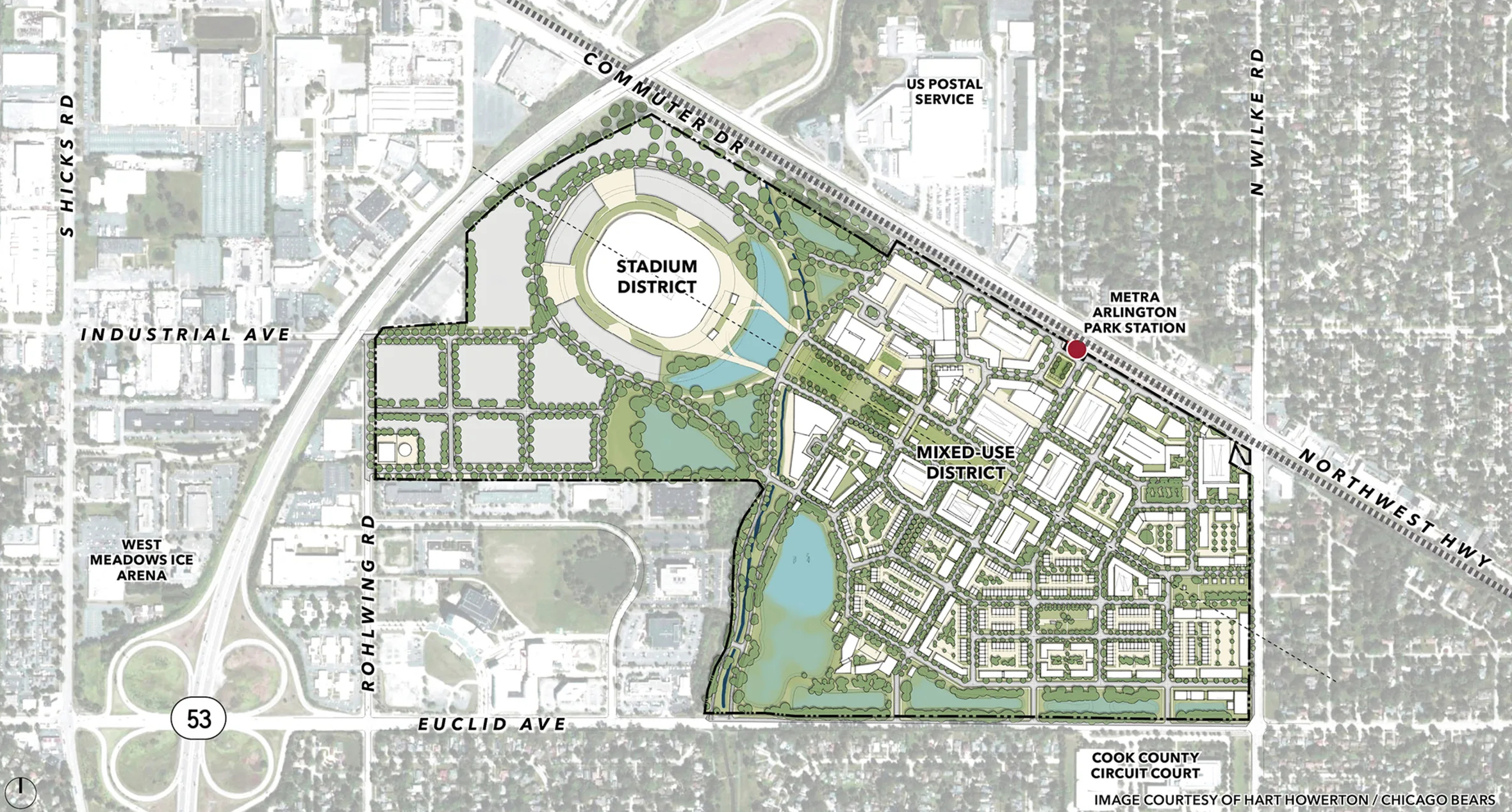
In the meantime, the team has cut off discussions with the city of Chicago related to renovating Soldier Field, even as city officials push for a possible deal to keep the Bears in Chicago. In July, the city, in partnership with a development team, released three design concepts for upgrading Soldier Field, including a domed stadium plan that would cost $2 billion.
The Bears, in the open letter, stated that while under contract with Churchill Downs, the team would not explore alternative stadium sites or opportunities. In short, while a deal is not 100% certain, it appears more likely that the Bears will be packing their bags for Arlington Heights within the next decade.
Why would the Chicago Bears leave Chicago?
There are several motivations for leaving Chicago. For one, the Bears do not own Soldier Field; the city does. Under the current Soldier Field contract, which runs through 2033, the franchise must share sizable revenues with the city and must rely on the Chicago Park District for maintenance of the property. Field conditions have been an ongoing issue for the team and NFL league officials, as have event schedule conflicts, parking capacity, accessibility, the overall fan experience.
Secondly, with a capacity of just 61,500, Soldier Field is the smallest stadium in the NFL, with nearly 20,000 fewer seats than Dallas Cowboys’ AT&T Stadium and 21,000 fewer seats than MetLife Stadium, home of the New York Giants and Jets.
ALSO SEE: Chicago proposes three options for Soldier Field renovation including domed stadium
The biggest motivation, perhaps, is the unrealized revenue potential for one of the world’s most valuable sports franchises ($5.8 billion, No. 6 on Forbes’ World’s 50 Most Valuable Sports Teams 2022). The Bears have watched other sports organizations—Atlanta Braves, Chicago Cubs, Green Bay Packers, Milwaukee Bucks, to name a few—cash in on private and public-private sports-anchored entertainment districts that draw year-round crowds and create a more diverse revenue model.
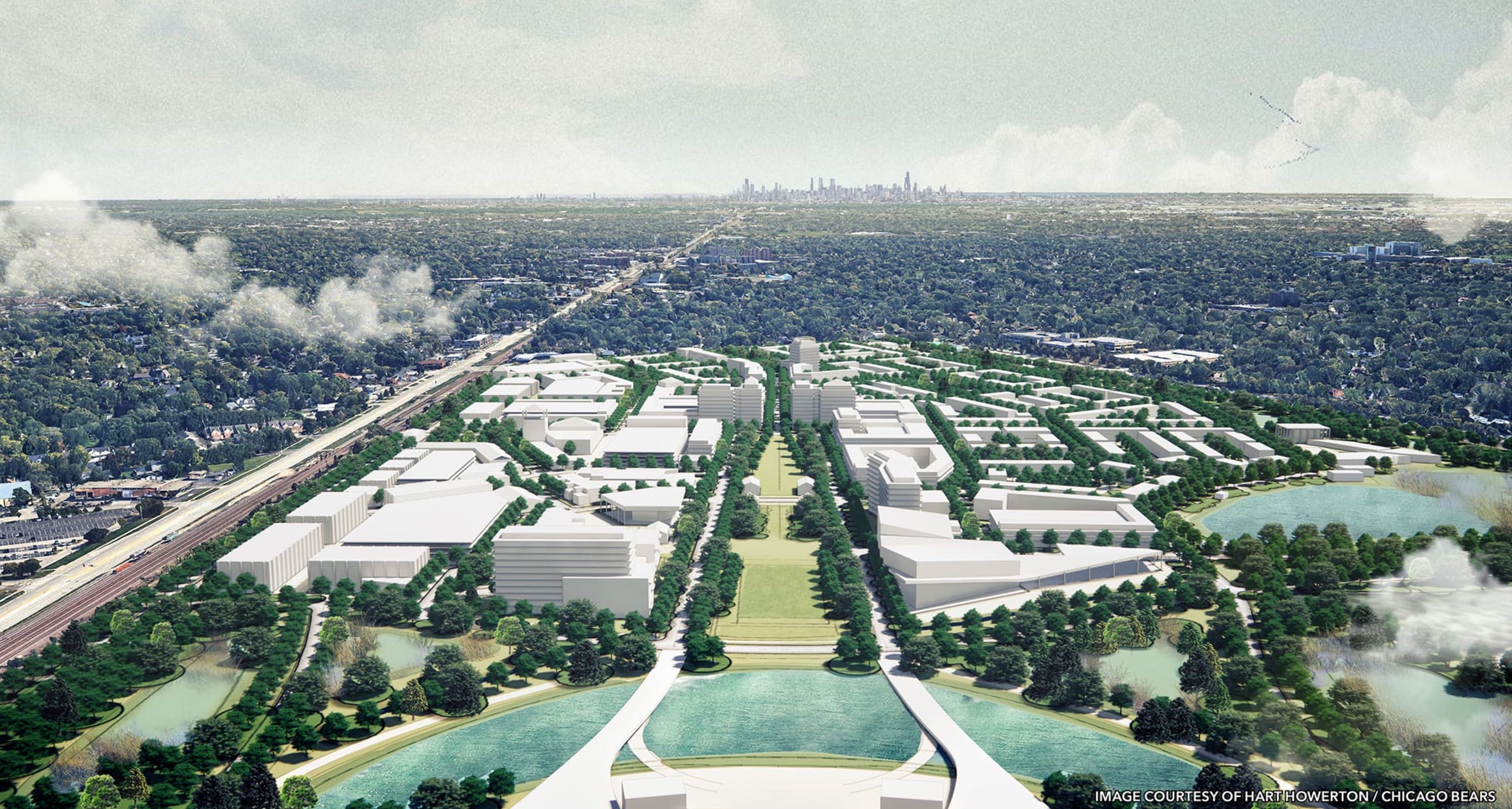
Who’s going to pay for the Chicago Bears stadium?
According to the Bears, its Arlington Heights plan would not call for public funding for direct stadium structure construction. The organization left open the possibility of seeking public funds to assist with the development of the other portions of the development.
The team believes that any public investment is money well spent given the short-term and ongoing benefit to the Chicagoland community, Cook County, and the state of Illinois. The Bears stated: “Construction of the proposed project is projected to create more than 48,000 jobs, result in $9.4 billion in economic impact for Chicagoland, and provide $3.9 billion in labor income to workers across the region, while the completed project will create more than 9,750 long-term jobs, result in $1.4 billion in annual economic impact for Chicagoland and provide $601 million in annual labor income to workers across Chicagoland. We also anticipate that the development will generate $16 million in annual tax revenue in addition to property taxes for Arlington Heights, $9.8 million for Cook County, and $51.3 million for the State of Illinois.”
Related Stories
| Jul 18, 2014
Top Architecture Firms [2014 Giants 300 Report]
Gensler, Perkins+Will, NBBJ top Building Design+Construction's 2014 ranking of the largest architecture firms in the United States.
| Jul 18, 2014
2014 Giants 300 Report
Building Design+Construction magazine's annual ranking the nation's largest architecture, engineering, and construction firms in the U.S.
| Jul 17, 2014
A new, vibrant waterfront for the capital
Plans to improve Washington D.C.'s Potomac River waterfront by Maine Ave. have been discussed for years. Finally, The Wharf has started its first phase of construction.
| Jul 8, 2014
Does Zaha Hadid’s Tokyo Olympic Stadium have a design flaw?
After being criticized for the cost and size of her stadium design for the 2020 Olympics in Tokyo, a Japanese architect points out a major design flaw in the stadium that may endanger the spectators.
| Jul 8, 2014
Frank Lloyd Wright's posthumous gas station opens in Buffalo
Eighty-seven years after Frank Lloyd Wright designed an ornamental gas station for the city of Buffalo, the structure has been built and opened to the public—inside an auto museum.
| Jul 7, 2014
7 emerging design trends in brick buildings
From wild architectural shapes to unique color blends and pattern arrangements, these projects demonstrate the design possibilities of brick.
| Jul 7, 2014
A climate-controlled city is Dubai's newest colossal project
To add to Dubai's already impressive portfolio of world's tallest tower and world's largest natural flower garden, Dubai Holding has plans to build the world's largest climate-controlled city.
| Jul 3, 2014
Arthur Ashe Stadium the latest to tap Birdair
The United States Tennis Association (USTA) and ROSSETTI, the architect of record for the Arthur Ashe Stadium, tapped Birdair to supply a 210,000-square-foot, PTFE membrane, retractable roof, expected to be installed by 2016.
| Jul 2, 2014
First Look: Qatar World Cup stadium design references nomadic heritage
Organizers of the Qatar 2022 World Cup, the Supreme Committee for Delivery and Legacy, recently unveiled designs for the second stadium.
| Jul 2, 2014
Emerging trends in commercial flooring
Rectangular tiles, digital graphic applications, the resurgence of terrazzo, and product transparency headline today’s commercial flooring trends.


